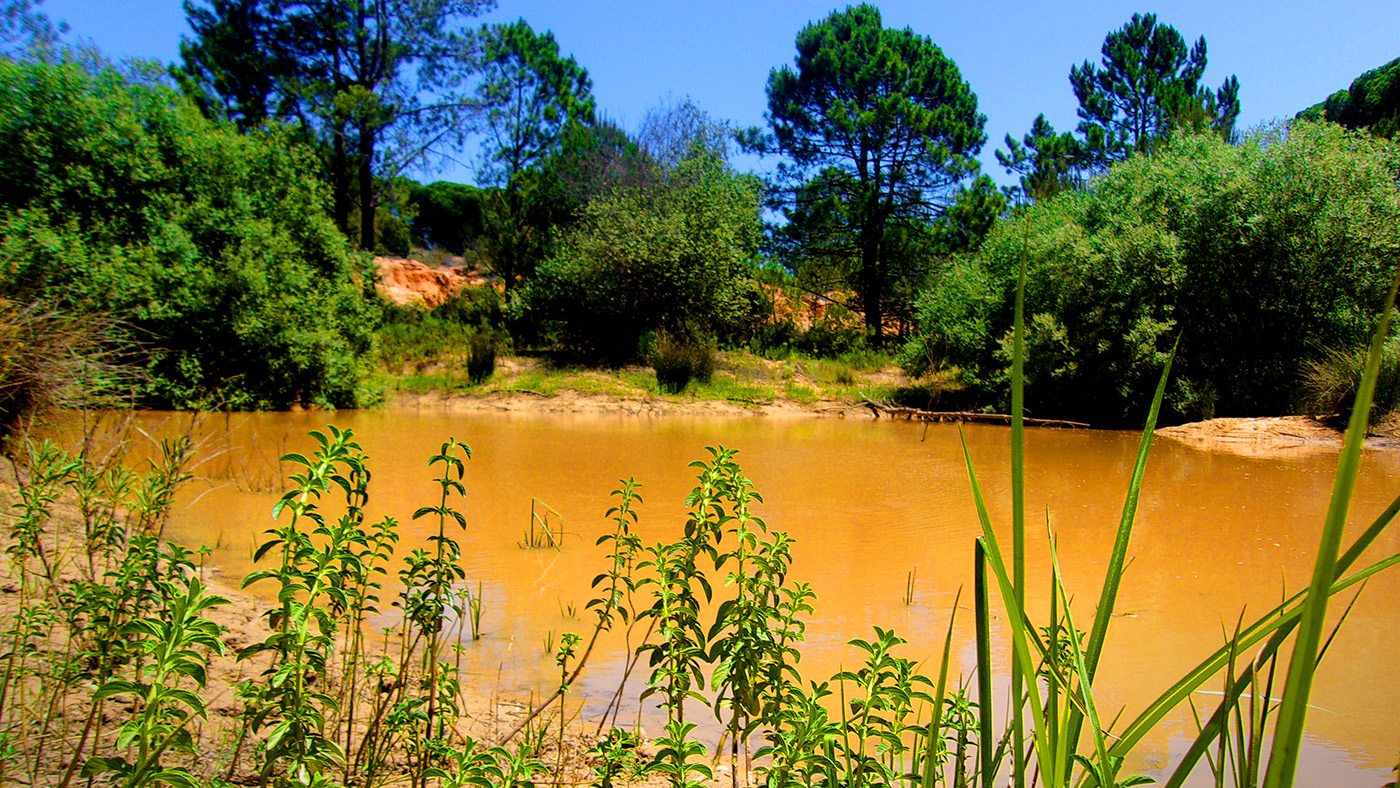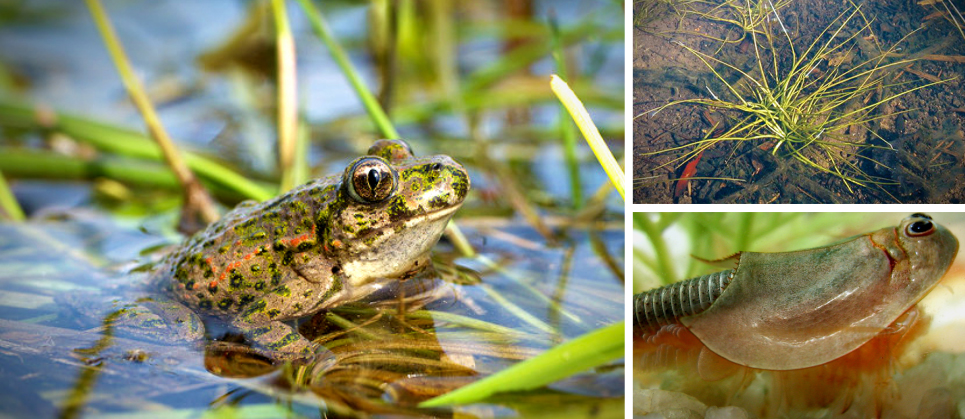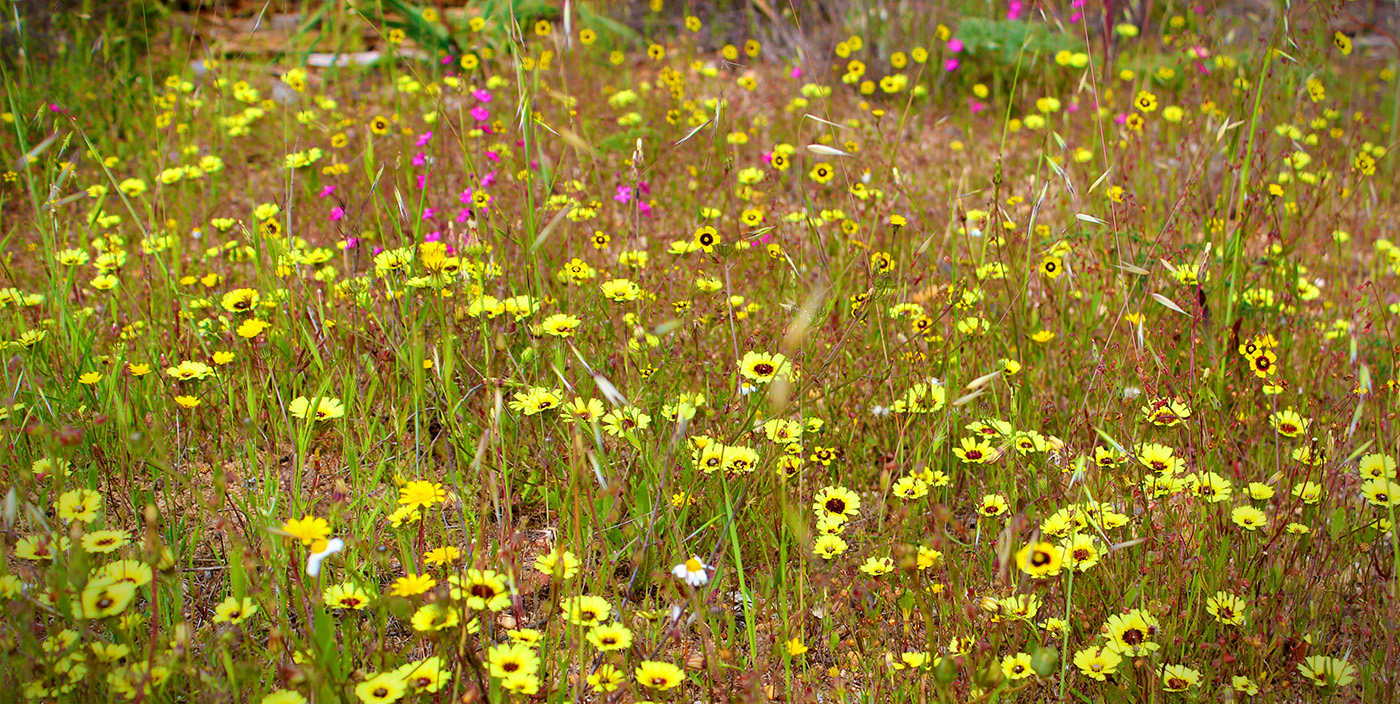• Western Marsh Harrier (Circus aeruginosus) resident 1)
• Black Kite (Milvus migrans) Mar.-Aug. 2)
• Iberian Green Woodpecker (Picus sharpei) resident 3)
• Iberian Azure-winged Magpie (Cyanopica cooki) resident 4)
• Bee-eater (Merops apiaster) Mar.-Sep. 5)
• Red-crested Pochard (Netta rufina) Year-round 6)
• Wryneck (Jynx torquilla) Apr.-Oct. 7)
• Great Reed Warbler (Acrocephalus arundinaceus) Mar.-Aug. 8)
• Short-toed Treecreeper (Certhia brachydactyla) resident 9)
• Melodious Warbler (Hippolais polyglotta) Apr.& Sep. 10)
• Waxbill (Estrilda astrild) resident 11)
• Red-necked Nightjar (Caprimulgus ruficollis) Apr.-Sep. 12)
• Black Kite (Milvus migrans) Mar.-Aug. 2)
• Iberian Green Woodpecker (Picus sharpei) resident 3)
• Iberian Azure-winged Magpie (Cyanopica cooki) resident 4)
• Bee-eater (Merops apiaster) Mar.-Sep. 5)
• Red-crested Pochard (Netta rufina) Year-round 6)
• Wryneck (Jynx torquilla) Apr.-Oct. 7)
• Great Reed Warbler (Acrocephalus arundinaceus) Mar.-Aug. 8)
• Short-toed Treecreeper (Certhia brachydactyla) resident 9)
• Melodious Warbler (Hippolais polyglotta) Apr.& Sep. 10)
• Waxbill (Estrilda astrild) resident 11)
• Red-necked Nightjar (Caprimulgus ruficollis) Apr.-Sep. 12)
• Greater Flamingo (Phoenicopterus roseus) resident
• Hoopoe (Upupa epops) resident
• Crested Tit (Lophophanes cristatus) resident
• Crested Lark (Galerida cristata) resident
• Sardinian Warbler (Sylvia melanocephala) resident
• White Stork (Ciconia ciconia) Year-round
• Serin (Serinus serinus) resident
• Cetti’s Warbler (Cettia cetti) Year-round
• Zitting Cisticola (Cisticola juncidis) resident
• Pied Avocet (Recurvirostra avosetta) Year-round
• Pallid Swift (Apus pallidus) Mar.-Oct.
• Hoopoe (Upupa epops) resident
• Crested Tit (Lophophanes cristatus) resident
• Crested Lark (Galerida cristata) resident
• Sardinian Warbler (Sylvia melanocephala) resident
• White Stork (Ciconia ciconia) Year-round
• Serin (Serinus serinus) resident
• Cetti’s Warbler (Cettia cetti) Year-round
• Zitting Cisticola (Cisticola juncidis) resident
• Pied Avocet (Recurvirostra avosetta) Year-round
• Pallid Swift (Apus pallidus) Mar.-Oct.
Mediterranean Temporary Ponds | Pontal Forest | Ria Formosa

Protected by law and still present in the Pontal Forest, Mediterranean temporary ponds are shallow water bodies which undergo a periodic cycle of flooding and drought. These ponds have exceptional ecological value because they support very specific communities of plants – especially of aquatic ferns of the Isoetes genus, like the one pictured below on the top right corner – and because they also shelter a high proportion of endangered species. Its flora is mainly composed of plants that are restricted by a short life cycle and must produce seeds before the dry summer season; besides plants, these seasonal ponds host rare and threatened crustaceans (such as some Fairy Shrimps and Triops that live exclusively in this habitat), as well as insects (like Dragonflies and Beetles), and amphibians (like the Natterjack Toad and the Parsley Frog, pictured on the left). This habitat is also crucial in providing water to larger forms of wildlife in dry and sub-arid environments, like the Algarve. Depicted above is one Pontal Forest’s many Mediterranean temporary ponds.

Featured Plants | Pontal Forest | Ria Formosa

Known in Portuguese as ‘Alcar-do-Algarve’, the Greater Spotted Rock Rose* (Tuberaria major) only exists in the Algarve. This perennial plant flowers from March to May and occurs in acidic gravel or sandy soils, especially in the clearings of scrubland. It responds favourably to forest fires, suggesting that germination is stimulated by heat shock. The plant has a very restricted range and a highly fragmented distribution area that is bringing it closer to extinction. The Pontal Forest shelters the largest population of Tuberaria major in existence. This plant is depicted above mixed with wild Daisies. Showed below on both images, the Big-headed Thyme* (Thymus lotocephalus) is yet another endemic plant from the Algarve threatened by habitat degradation and fragmentation. As in the case of Tuberaria major, its largest and most continuous population can be found in the Pontal Forest. This minute shrub prefers open spaces of pine woods and shrubland on sandy acid soils, or on calcareous soils with clayey loam. Its showy, purple flowers can be seen between late March and early June. *Free Translation

